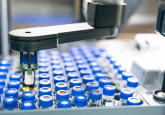Analyzing protein glycosylation using UHPLC: a review

Ultrahigh performance liquid chromatography (UHPLC) uses small stationary-phase particle size (<2 μm) and high pressure in order to achieve rapid and efficient separations. The speed and high resolution of this method has made it a valuable tool for analyzing the complex glycosylation patterns found in post-translationally modified proteins. This article highlights the differences between UHPLC and HPLC and reviews recent UHPLC applications and developments for detecting glycosylated proteins (e.g., glycomics studies) and characterizing glycosylated pharmaceuticals (e.g., monoclonal antibodies). Ultrahigh performance liquid chromatography (UHPLC) is a separation method that has been used extensively in a variety of research fields since 2004. The...




